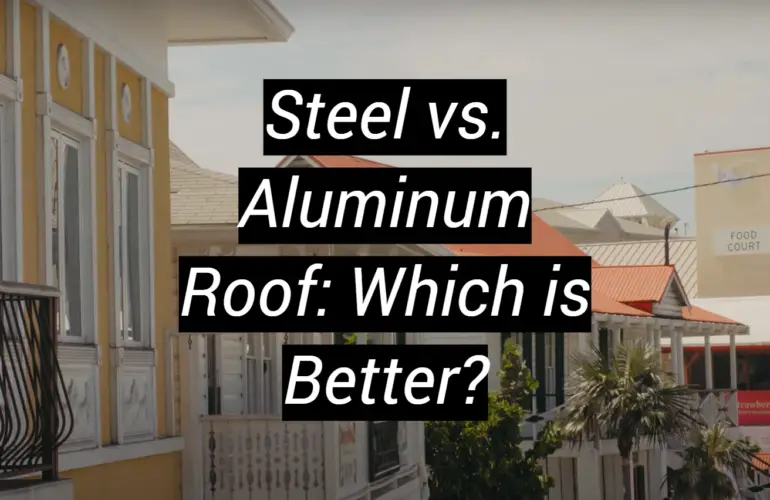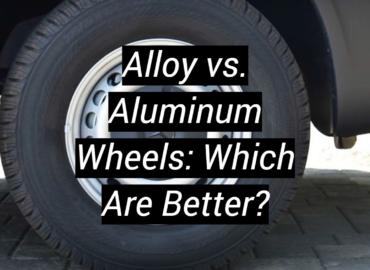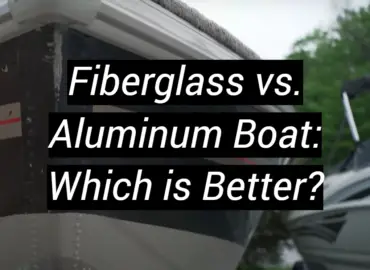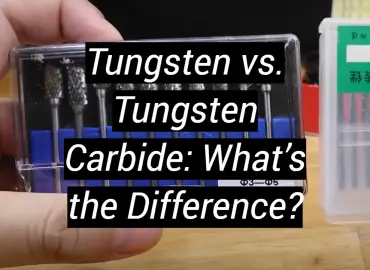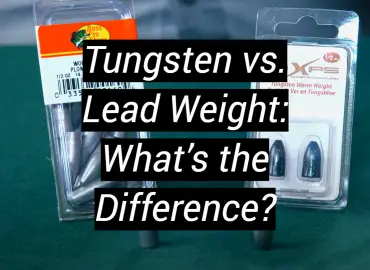Are you looking for the most durable option for your roofing project? Are you torn between steel and aluminum roofs, unsure of which is best for your situation? If so, you’re not alone! Many homeowners are faced with the same dilemma – both materials offer their own unique benefits, making it difficult to decide on one over the other. In this blog post, we take a closer look at steel vs. aluminum roofing and determine which material is better suited for different types of residential projects. By exploring comparative advantages and disadvantages associated with each option, we will give you a comprehensive picture on how they stack up against each other in terms of quality and affordability. Read on to find out more about these two popular materials!
What Is a Steel Roof?
Steel roofing is a type of metal roofing that consists of galvanized or zinc-coated steel sheets, providing superior protection against the elements. Steel roofs come in an array of colors and styles, so you can find something to fit your home’s look easily. Steel roofs are often used on commercial buildings due to their durability and long service life. They have also become increasingly popular for residential homes because they are both lightweight and durable.

When it comes to installation, steel roofs can be installed over an existing roof making them ideal for retrofits or renovations. They also require little maintenance since they do not crack, corrode, or rot like some other materials do. Additionally, installing a steel roof may qualify you for certain tax incentives and rebates.
Steel roofs are also a great option when it comes to energy efficiency, as most types reflect the sun’s heat away from your home. This can make a huge difference in hot climates, and help bring down energy bills during the summer months. Steel roofs typically come with warranties of up to 40 years, offering homeowners peace of mind should anything happen to their roofing installation.
Overall, steel roofs are an excellent option for homeowners looking for superior protection against the elements combined with low-maintenance requirements and long-term savings. It is important to weigh all factors before making your decision on which type of roofing material is best suited for your home or business. [1]
What Is an Aluminum Roof?
An aluminum roof is a type of metal roof made from, as the name implies, aluminum. It has become popular in recent years due to its many benefits, including light weight, durability, and cost-effectiveness.
In some cases, an aluminum roof can even be eligible for tax credits or rebates due to its energy efficiency. Additionally, aluminum is a recyclable material so it is great for those who want to go green with their roofing materials.Aluminum roofs come in a variety of color options and styles that can match almost any home exterior design aesthetic. And while they may seem intimidating at first due to the fact that they are metal, aluminum roofs are actually very easy to install and maintain. They also tend to last longer than other roofing materials such as asphalt or wood due to their resistance against corrosion and weather-related damage.
Aluminum vs. Steel Roofing
When it comes to roofing, two of the most popular materials are aluminum and steel. Both have their pros and cons, so choosing which material is best for your home can be tricky.
In terms of cost, steel roofing is usually more expensive than aluminum since steel requires additional coating processes that add to its cost. Also, installation of a steel roof tends to require more work than an aluminum one. As such, it may take longer to install and will likely cost more in labor costs as well.
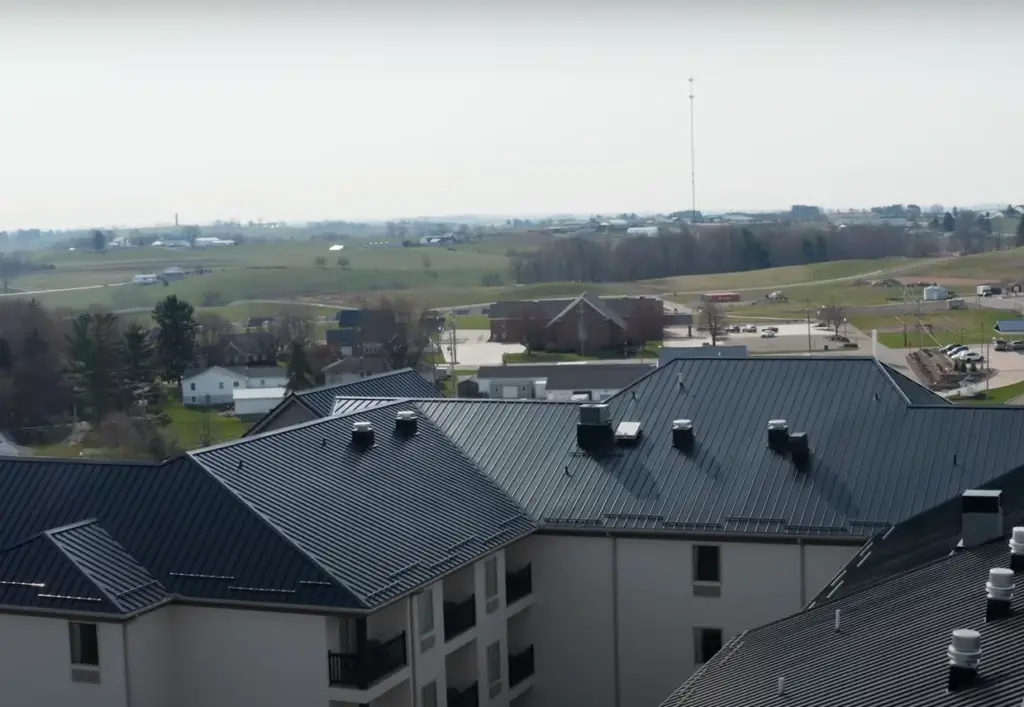
However, when it comes to durability, there’s no doubt that steel roofs are much stronger than aluminum ones. Steel has a higher tensile strength and is more resistant to extreme temperatures and weather conditions.
So, which is better for your home? That depends on what you’re looking for. If you’re going for a roof that will last a long time and can withstand the elements, steel may be the way to go.
However, if cost is a major factor in your decision-making process, then aluminum might suit your needs better. Ultimately, it comes down to personal preference and budget. No matter what material you choose, make sure to research all of the pros and cons before making your final decision. [2]
Pros and Cons of Steel Roofs
Pros:
- Steel roofs are extremely durable and require minimal maintenance. They can last up to 50 years, depending on the type of steel and environmental factors.
- Steel is an affordable material when compared to other roofing materials such as slate or tile.
- Steel roofs can be lightweight and easy to install compared to heavier alternatives like concrete or clay tiles.
- Metal roofs reflect heat more effectively than dark shingles, which helps keep your home cooler in the summer months.
Cons:
- While steel is a relatively inexpensive material, it is also prone to denting from high winds, hail storms, fallen trees, etc.
- Metal roofing does not provide as much insulation as other roofing materials, so it may not be the best choice in areas with extreme temperatures or for homes that need extra insulation.
- Steel roofs can make more noise than other roofing materials, especially during heavy rains or hail storms.
- If not properly installed and maintained, steel roofs may become rusted or corroded over time. This can lead to leaks and water damage.
- Finally, some homeowners don’t like the look of metal roofs due to their reflective nature and potential to clash with home exteriors.
Pros and Cons of Aluminum Roofs
When it comes to roofing, aluminum is an attractive yet expensive choice. Generally speaking, aluminum roofs cost more than steel ones, but they are also considered one of the most durable materials available for both residential and commercial use. Some of the advantages of aluminum roofs include:
- High Durability: Aluminum roofs are very strong and can withstand extreme weather conditions such as high winds, hail storms and heavy snowfall without suffering significant damage. Additionally, since they don’t corrode like steel roofs do, they typically last longer.
- Lightweight Material: Aluminum is a lightweight material that makes installation easier compared to heavier materials such as shingle or slate. This can be beneficial in areas where roof access is limited.
- Cost Efficient: Aluminum roofs generally require less maintenance than other roofing materials, which can help to offset the high initial cost of installation. Additionally, aluminum provides superior insulation than steel, meaning your energy costs could be lower in the long run.

However, there are a few disadvantages associated with using aluminum for your roofing needs:
- High Cost: As mentioned previously, aluminum roofs tend to be more expensive than steel ones. Depending on the size of your roof and the complexity of installation, you may end up spending significantly more money upfront compared to other options.
- Inadequate Fire Rating: Although aluminum is resistant to corrosion and rust, it isn’t as fireproof as its steel counterpart. Therefore, if you live in an area where wildfires are common, you may want to stick with a more fire-resistant option.
- Less Design Variety: While there are plenty of colors and styles for aluminum roofs, they generally don’t offer the same level of customization that other materials do. This can limit the design options available to you.
Ultimately, when making the decision between an aluminum roof or a steel roof, it comes down to your individual needs and budget. If cost is not an issue and you’re looking for a durable yet lightweight material with good insulation properties, then aluminum is a great choice. However, if budget is a concern or you need greater fire resistance than aluminum can provide, then steel may be the better option. [3]
Maintenance Tips for Steel Roofs
Steel roofs are an ideal choice for homeowners who need a durable, low-maintenance roofing solution. To ensure that your steel roof lasts for years to come, there are some simple maintenance tips you should follow:
- Clean regularly. Steel can develop a buildup of dirt and debris over time, which can leave it looking dull and unattractive. To prevent this from happening, clean the roof with a hose or pressure washer at least twice a year. Make sure to use only mild detergents and avoid abrasive scrubbing brushes or chemicals, as these could cause damage to the metal’s surface.
- Inspect the flashing regularly. The flashing around vents, chimneys, and other openings in the roof should be inspected once a year. A damaged or loose flashing can lead to water leaks, so make sure to check it and repair any damage as soon as possible.
- Check for rust spots. Steel is susceptible to rust if not cared for properly. Regularly inspect the surface of your steel roof and look for signs of rust spots, which may indicate that the metal has been exposed to moisture and needs extra protection from corrosion.
- Apply protective coatings periodically. Applying a protective coating such as paint or sealant can help protect your steel roof against weather damage, dirt accumulation, and rusting. Reapply these coatings every few years in order to keep your metal well-protected and looking its best.
By following these tips, you can ensure that your steel roof stays in great shape and lasts for many years to come. With proper care and maintenance, a steel roof can be an excellent choice for any home. [4]
Maintenance Tips for Aluminum Roofs
Aluminum roofs require less maintenance than traditional steel roofing, but that doesn’t mean they don’t need any at all. Taking steps to properly maintain an aluminum roof can help it last for many years and keep its appearance intact. Here are some tips to keep in mind when maintaining an aluminum roof:
- Check the panels regularly for signs of damage or corrosion. Look for dents, scratches, holes, chips, and other damages caused by weather conditions and debris. If you find any damage, repair it right away to prevent further deterioration.
- Clean off dirt and debris buildup from the surface of the roof with a hose or pressure washer on a low setting. This will help protect the finish of your roof and prevent corrosion.
- Apply a fresh coat of paint every few years to protect the finish of your aluminum roof from UV rays and weathering.
- Consider installing an aluminum gutter system to keep water away from your roof, as well as any other nearby structures. This will help reduce the chances of rust forming on your metal roofing.
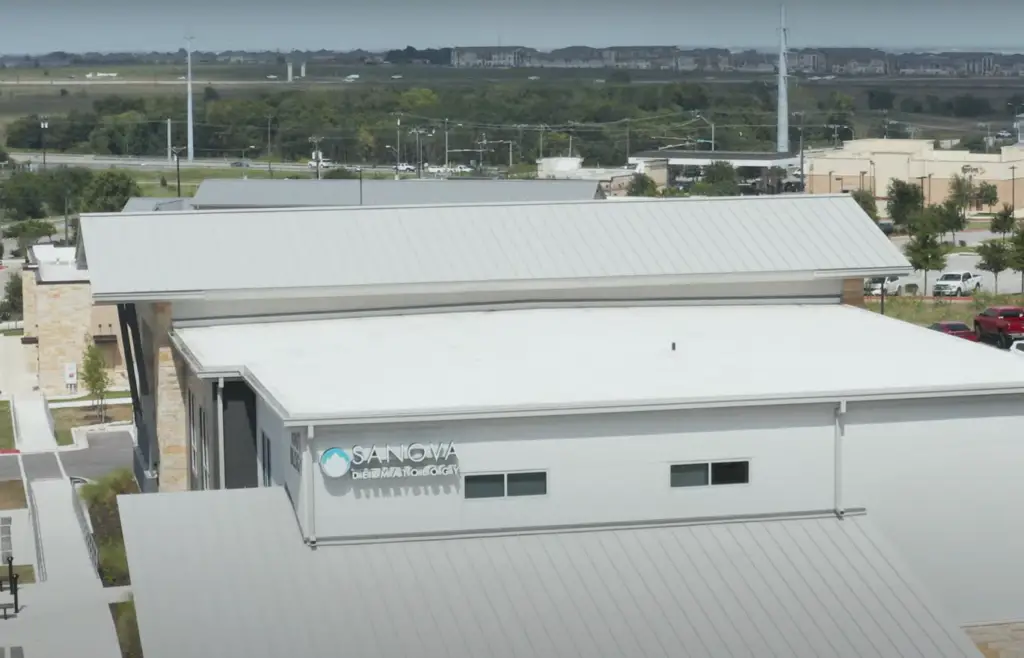
By taking these simple steps, you can ensure that your aluminum roof stays in good condition for many years to come!
Alternatives to Steel and Aluminum Roofs
Steel and aluminum roofs are a great choice for many homeowners, but there are other materials that can offer similar protection and longevity. Clay tile roofs have been used on homes for centuries and still offer exceptional protection against weather elements such as wind, rain, hail, and sun. They’re also fire-resistant and require little maintenance to stay in good condition. Additionally, clay tile is known to be energy efficient because of its unique ability to absorb heat from the sun during the day and release it at night when temperatures drop.
Slate is another great roofing material choice that can last up to 100 years with proper maintenance. It’s incredibly strong yet lightweight, making it easy to install without putting too much stress on your home’s structure. Slate is also fire-resistant and provides great protection against the elements.
Synthetic or rubber roofing materials are a popular choice because they’re relatively inexpensive, easy to install, and maintenance free. Synthetic roofs come in various colors and styles, so you can find one that matches your home perfectly. They’re also resistant to mold, mildew, and rot which helps them last longer than many other types of roofs.
No matter what type of roof you choose for your home, it’s important to make sure you get it installed properly by a qualified professional who knows what they’re doing. This will help ensure the longevity and effectiveness of the material while adding value to your home. [5]
How to Install a Steel Roof?
Installing a steel roof is not as complicated of a process as one may think. In fact, it is quite straightforward and can be done by both experienced professionals and DIYers alike. With the right tools and some patience, anyone with basic knowledge in construction or home improvement can successfully install a steel roof within a day or two. Here are the steps to follow when installing a steel roof:
- Measure the area where you will be installing your new roof. Make sure that you take into account any peaks or valleys in order to get an accurate measurement for your materials.
- Gather all of your materials together – this includes the steel sheets, screws/bolts, primer, sealant, caulk and any other materials you may need.
- Prepare the surface area of your roof. This means cleaning and clearing away any debris or dirt that may be present. Also make sure to check for any damaged shingles, cracks, or holes in the existing roof before beginning the steel installation.
- Begin laying down your sheets of steel over the entire surface area of your roof, making sure to secure them firmly with screws/bolts as needed for added support and stability.
- Make sure to use a primer along seams or joints of your steel sheets in order to provide an extra layer of waterproof protection against water damage or leaks in the future.
- Apply caulk and sealant liberally around the edges and joints of your steel sheets in order to create a tight seal that will also prevent water from seeping through.
- Finally, use flashing along any peaks or valleys that may exist on your roof in order to ensure complete waterproofing and protection against standing water or moisture build-up. Once you’ve completed these steps, you’ll have successfully installed a steel roof!
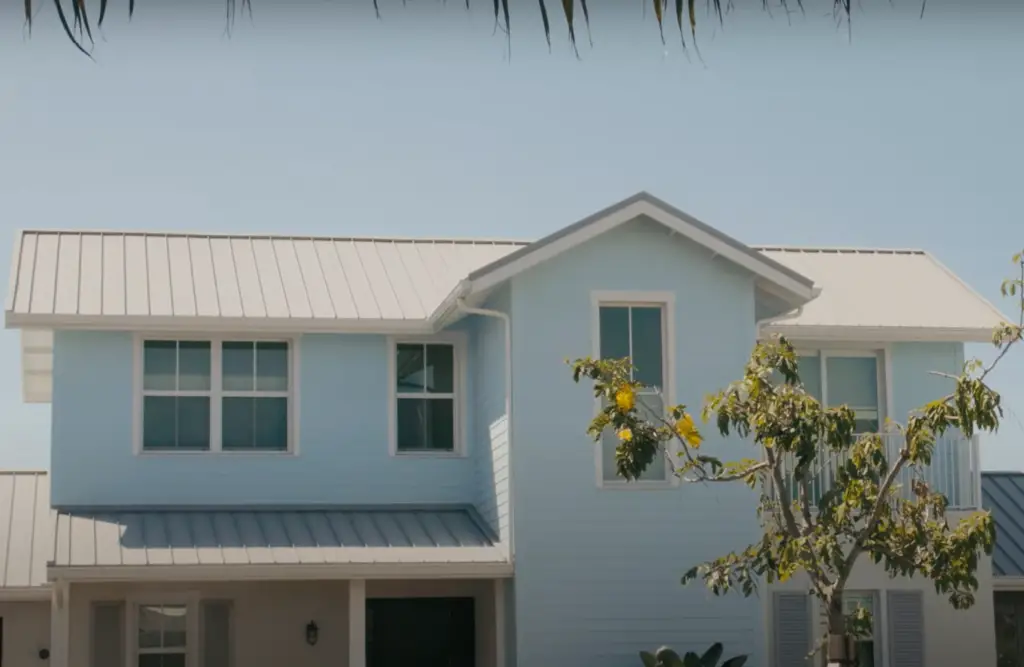
It is important to remember that while installing a steel roof may sound intimidating, it doesn’t have to be. With the right tools and materials, as well as some patience and attention to detail, anyone can install a steel roof with relative ease – even without professional help! Of course, if you ever have any questions or concerns during the process, it’s always best to consult a professional for additional guidance and advice.
How to Install an Aluminum Roof?
Aluminum roofing is quickly becoming a popular choice for homeowners looking to upgrade their roofs. Not only does aluminum last much longer than traditional roofing materials, but it also adds a unique visual appeal to any home. Installing an aluminum roof can seem intimidating, but with the right tools and knowledge it can be done in no time.
Before beginning the installation process, you will need some basic tools: hammer, screwdriver, drill/driver, nails, saws (hand and circular). Additionally, make sure you have all of the needed materials such as metal panels or shingles and flashing material like drip edge and ridge caps.
Now that you’ve gathered your tools and materials, you’re ready to begin the installation.
- Start by making sure all of your roof’s trusses and rafters are secure before you start installing aluminum panels or shingles. If any of them are weak, they must be replaced before starting the installation process.
- Next, install the flashing around windows, doors, vents and other areas where water could seep through. Make sure each piece is securely nailed in place and overlaps with the last one to ensure a tight seal.
- Now it’s time to install the metal panels or shingles on top of the flashing material you just installed. For easier maneuverability use an extra long nail gun to attach each panel/shingle.
- Finally, install ridge caps and drip edges along the perimeter of your roof to create a finished look.
Once all of these steps are completed, you’ve successfully installed an aluminum roof! With regular cleaning and maintenance, your new roof should last for many years to come. [6]
FAQ
Is a steel roof or aluminum roof better?
It depends on the application. Steel roofs are generally more durable and have a longer lifespan, but they also tend to be more expensive.
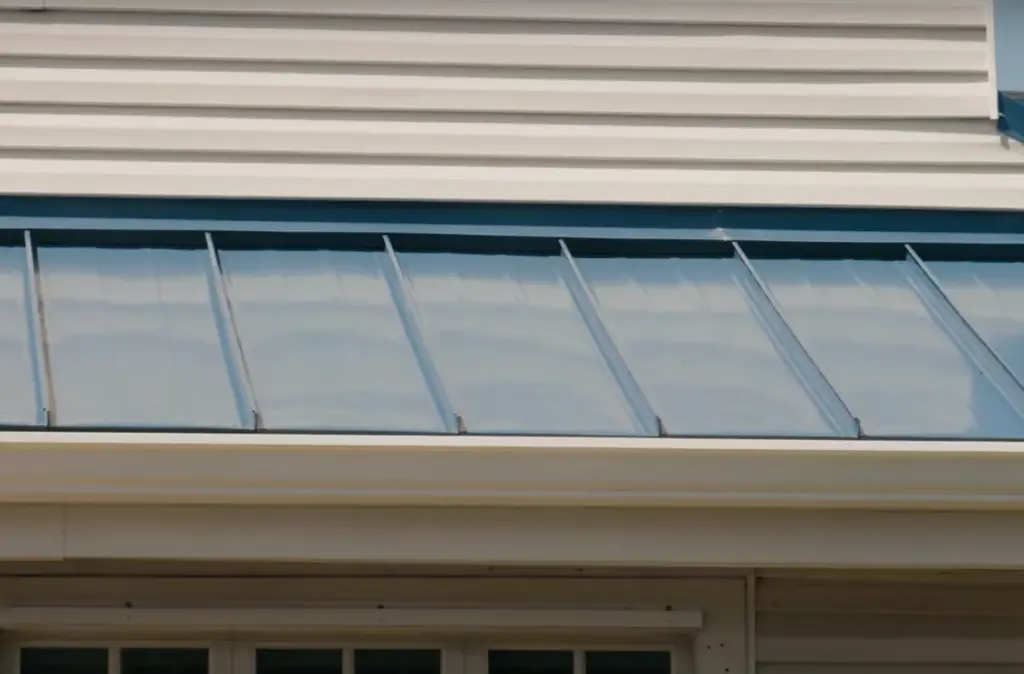
Aluminum roofs are lighter and may be less expensive, but they may not last as long as steel roofs do. Additionally, aluminum roofs tend to dent easily, which can affect their longevity.
Which is better for extreme climates?
Steel is likely to be more suitable for areas with extreme temperatures because it has a higher melting point than aluminum. In addition, steel is usually thicker and therefore provides superior protection from hail and other weather-related damages. On the other hand, aluminum may be better suited for areas with low wind speeds since it’s much lighter in weight than steel.
Is one type of roofing easier to install than the other?
It is generally easier to install an aluminum roof than a steel roof due to its lighter weight.
Which type of roof is more fire-resistant?
Steel roofs are typically more fire-resistant because they are made with galvanized or stainless steel. Aluminum roofs can be treated and coated with flame retardants, but steel roofs tend to provide better protection against fires.
Is one type of roofing more eco-friendly than the other?
In terms of environmental friendliness, aluminum may have an edge over steel since it is much lighter and therefore requires less energy for transport and installation. Additionally, aluminum roofs are 100% recyclable and can be reused or repurposed for other applications. Steel roofs, on the other hand, are not as easily recycled due to their heavier weight. However, both materials have similar energy efficiency ratings when installed properly with adequate insulation. Overall, there is no clear answer as to which material is better—steel or aluminum roofing—as this depends largely on the application and budget.
Useful Video: Aluminum vs Steel Roofing
Conclusion
When it comes to steel and aluminum roofs, there is no one-size-fits-all answer. Both materials offer advantages and disadvantages that need to be considered when selecting a roofing system. Steel roofs provide better protection against rust and fire damage while aluminum roofs are lightweight, durable, and more affordable. Ultimately, homeowners should compare the features of each material in order to decide which works best for their particular needs and budget. With the right information, homeowners can make an informed decision regarding the type of roof they want to install on their home.
References:
- https://www.infiniteroofingny.com/roof/metal/steel-vs-aluminum/
- https://www.westernstatesmetalroofing.com/blog/aluminum-roofing-vs-metal-roofing
- https://blog.thepipingmart.com/metals/steel-vs-aluminum-roofing-whats-the-difference/
- https://canadianmetalroofing.ca/steel-roofing-vs-aluminum/
- https://sheffieldmetals.com/learning-center/galvalume-steel-vs-aluminum/
- https://www.metalroofnet.com/metal-roofing-blog/bid/97395/Aluminum-Roofing-vs-Steel-Roofing

